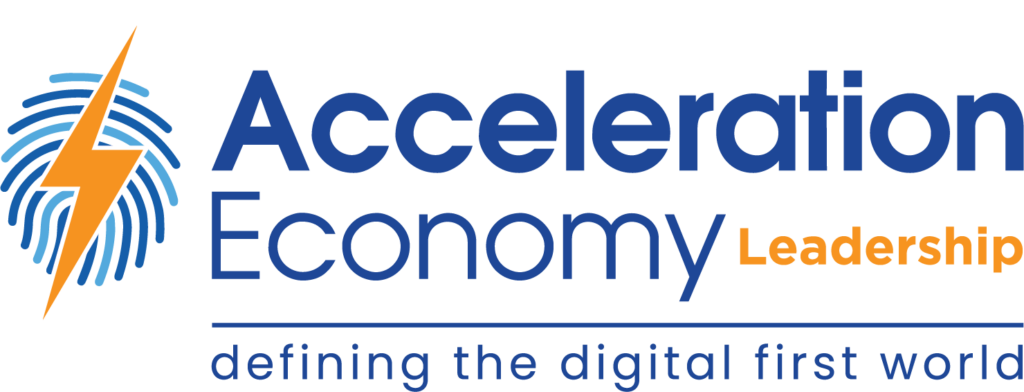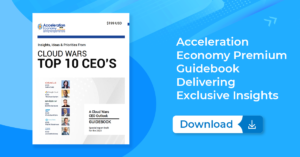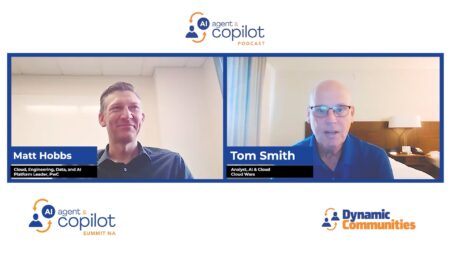In episode 37 of the Growth Swarm podcast, John Siefert, Bob Evans, Tony Uphoff, and Scott Vaughan continue their discussions around leadership and managing the day-to-day operations of businesses, from the practitioner perspective. This episode’s conversation focuses on the difference between strategy and process and why it’s critical to find the right balance between the two. The team discusses how to think about these things and how to manage through them effectively.
[This episode of Growth Swarm is brought to you by Lookout, which is an Acceleration Economy Top 10 Cybersecurity company. Read more about Lookout here.]
Highlights
00:39 — John kicks off the discussion with commentary on how people always talk about their strategies, and how their strategies will help them navigate through this tough economy. After the initial strategy discussion, however, things often go radio silent. With that in mind, John poses the question: Is strategy without process just a bunch of ideas?
01:45 — Tony says this is such a timely topic, as businesses are trying to find ways to lead in uncertain and challenging times. He references a Harvard research study on businesses that failed, and one of the oft-repeated comments from participants in that study was “I never really understood the strategy.”
02:30 — At a conference about 10 years ago, Tony gave a talk on this same issue. He asked people in the audience to raise their hands if they had business goals, and 100 percent of the hands went up. Tony then showed a slide that said: “Goals are for losers; process is for winners.” His point was that everyone has a goal (a.k.a. strategy), but the devil is always in the details. Do you have the right people in the right positions? Are you allocating resources the right way? And do you have the right measurements to make sure that you’re enabling processes across your organization? People need to focus on identifying and executing the key processes to enable their businesses.
To hear more data modernization, AI/hyperautomation, cybersecurity, and growth strategies from CIO practitioners, tune into Acceleration Economy’s Digital CIO Summit, which takes place April 4-6. Register for the free event here.
05:38 — John says that process meetings are an incredible opportunity to communicate the significance of each department and individual’s role in achieving the strategy. When people understand their contribution to the process and how it contributes to the bigger picture, they are more likely to take ownership and feel a sense of pride and accomplishment when the strategy is successful. This helps to operationalize the strategy, ensuring that everyone is aligned and working towards the same goals.
06:35 — Bob recounts how when he was starting Cloud Wars Minute a few years ago, his original strategy was complicated. He sent his 75-page document outlining his strategy to his daughter, who has expertise in this area, and she suggested that he just film videos on his phone, text them to her, and she would post them on LinkedIn. This simplified process made it possible for the show to succeed, whereas his elaborate strategy would have doomed it to failure. Bob thinks that everyone in business, regardless of their role, needs to recognize their strengths and weaknesses. Some people are more process-oriented, while others are more strategic. It’s essential to know what you’re good at and not overplay your hand when you don’t have the right skills for the job.
08: 51 — Scott agrees with Bob and adds that it’s also important to surround yourself with people who complement what you’re good at. If you’re good at strategy, then you need people who are good at process around you.
10:57 — Scott clarifies the discussion further by pointing out that strategy and operational processes are interdependent. In the face of market changes or the need to streamline processes, you may need to retool your strategy, which then makes it important to align operational processes with strategy, but we shouldn’t confuse the two and both are important. Without a clear strategy, there’s a problem, but if you can’t operationalize it, you can’t streamline it and then it won’t deliver on goals. Scott says that ServiceNow CEO Bill McDermott is so good at articulating the company’s strategy that his team can build around it and see it through, but it’s rare to be able to package up a strategy in a way that people can understand and get behind. Scott cautions against leaders who are constantly coming up with new strategies, but nothing ever gets implemented or executed on that strategy. Ultimately, though, it’s important to find the balance to get things right.
12:53 — It’s important to distinguish between productization and overall strategy, says John, because sometimes organizations may mistake productization as a new strategy. However, productization is just a new product or service that falls under the larger umbrella of the organization’s strategy and needs to be integrated into the operational processes. John asks everyone to share their biggest tips for those who are trying to operationalize or build process around their strategy.
13:31 — Make sure that your business processes are aligned with your declared strategy, says Tony. Conducting a gap analysis is healthy in this regard. In the spirit of operationalizing, Tony has historically conducted monthly and quarterly operational reviews. During the first 10 minutes of these meetings, they review the North Star, or declared strategy, and differentiate a broad-based strategy from a product strategy or position. The key is to ensure that these strategies are aligned, and that all the necessary processes are in place to execute them. The reviews help to identify gaps between what the company says it’s doing and what it’s actually doing, and then quickly realign processes with its strategy within 30 minutes. The world moves quickly today and things can get out of sync fast, so these reviews should be frequent, ideally once a month.
15:08 — Bob mentions something from Oracle’s recent earnings call, in which CEO Safra Catz talked about the business benefits that customers are gaining from Oracle’s artificial intelligence (AI) infusion. One of the examples she shared was the ability to close books in just days instead of weeks or months. This capability can help businesses understand their operations better, align their strategy with their goals, and allocate their resources more effectively. The ability to demonstrate what you say through your actions is very important.
16:18 — Scott recalls a former boss and longtime CEO who used to “do a lap around,” which involved going to different levels of the organization and asking people if they could articulate the strategy. Sometimes we get so caught up in our own understanding of the strategy that we assume everyone else understands it, too.
17:14 — John stresses that it’s important not to become too attached to the process of running your business and lose sight of what the customer wants. This happened in the automotive industry, where manufacturers were so committed to producing traditional combustion engines for their cars, that they missed the shift toward the electric cars that their customers wanted. It’s crucial not to get so fixated on hitting certain results and meeting high expectations that you forget to pay attention to what the customer needs. This is especially difficult in manufacturing, where processes are tightly controlled, but it’s essential to use your North Star to guide decision-making and understand the customer’s perspective. Otherwise, your business may fall behind.
18:39 — Scott recalls a story he heard during a presentation by FedEx Chairman Fred Smith and FedEx CIO Rob Carter, when the latter pitched virtualization, which lets you move the capacity of your data and your files across different servers, as a new investment opportunity. “Fred looked at him and said, ‘Oh, that’s what we do for a living,'” recalls Scott, referring to FedEx’s main logistics and shipping business. It was already the company’s entire strategy. Scott found the story to be a great example of how different two brilliant minds can work together and pick each other’s strengths.
19:52 — John agrees that it’s a great example, and that Rob Carter will be featured in a fireside chat at the upcoming Digital CIO Summit on April 4-6, where attendees can expect to hear more insights leaders and practitioners. Scott praises Rob’s insightful nature and encourages listeners not to miss it.
Want more tech insights for the top execs? Visit the Leadership channel:











